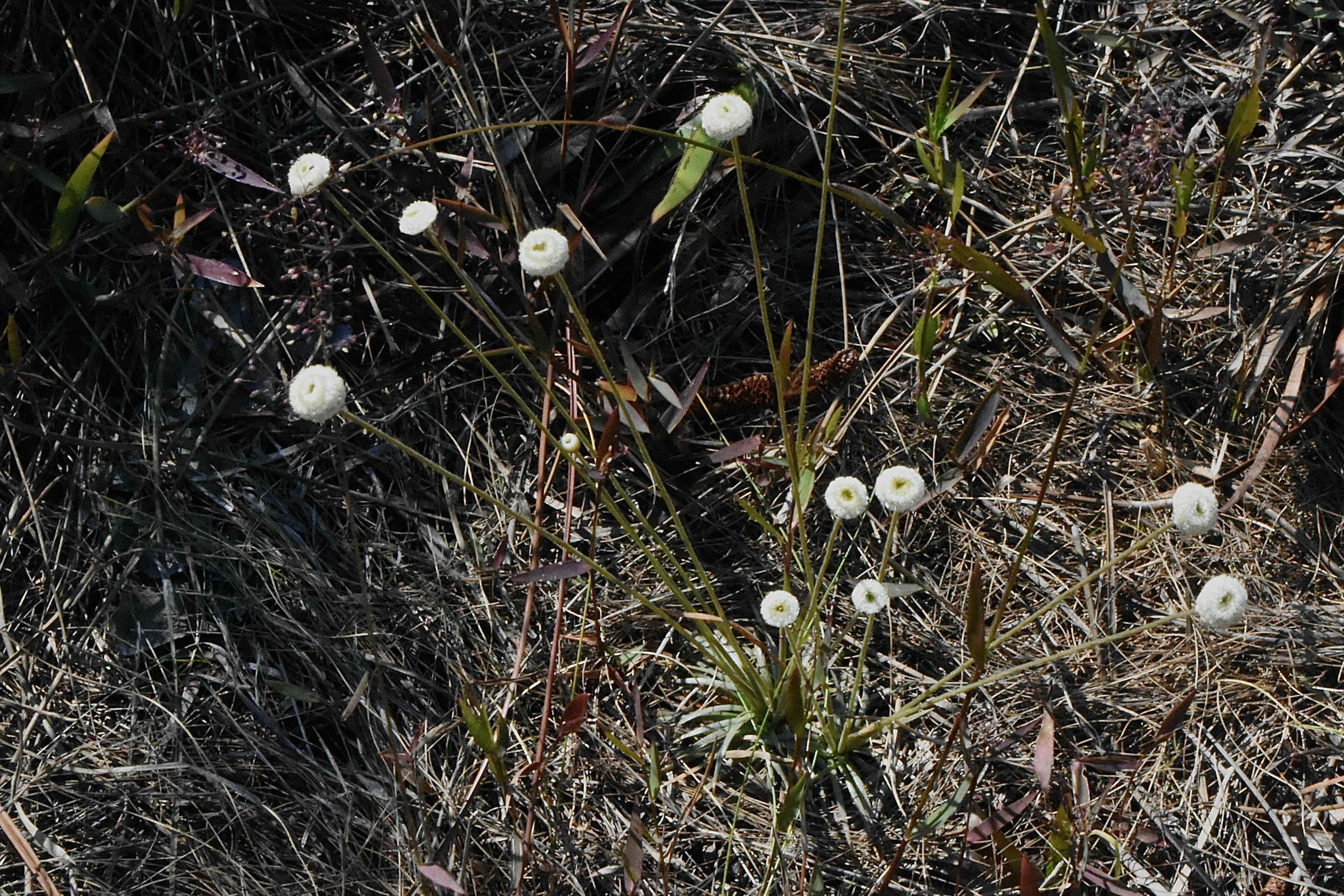
Yellow hatpins, photographed at North Jupiter Flatwoods Natural Area, Jupiter, Palm Beach County, in March 2018.
Everyone knows that plants “breathe” through their leaves, “inhaling” carbon dioxide and “exhaling” oxygen. Yellow hatpins, Syngonanthus flavidulus, breathes through its roots as well.
It’s a member of a group of aquatic plants called isoetids that, among other things, can take in the carbon dioxide needed to conduct photosynthesis from the soil rather than from the air. More on this in a bit.
Yellow hatpins is a Florida native found throughout most of the Sunshine State sans Broward and Monroe counties and a few others. It’s also found throughout the southeastern United States from North Carolina to Mississippi. The Institute for Regional Conservation considers it rare in South Florida.
Taxonomically speaking, yellow hatpins is a member of a family of plants called pipeworts, which have a buttonlike flowerhead atop a long pipelike stem, or in botanical terms, a scape. Together, the flowerheads and scape resemble a hatpin. In the case of yellow hatpins, the flowerhead is a mix of pale yellow and white and contain a multitude of small, individual male and female flowers.
They’re so similar in their looks that the common names, hatpins, bogbuttons and pipestems are used interchangeably almost to the point of being meaningless.
There are two other pipewort species found in South Florida that resemble yellow hatpins, tenangle pipewort and flattened pipewort. Our guy, yellow hatpins, is considerably shorter than its cousins, less than a foot tall, and generally produces more flowerheads. (There is third member of the pipewort family, Ravenel's pipewort but its flowerhead is substantially different than the others.)
Leaves are somewhat grass-like, curved, linear in shape, coming to sharp point at the tip. They are concentrated at the base.
Pipeworts require wet to inundated soil in order to survive. Yellow hatpins is found in bogs, along the edges of ponds and in wet pine flatwoods.
As we said above, yellow hatpins (and its pipewort cousins) does things a little differently than most plants when it comes to photosynthesis. It is part of a group of plants known as isoetids, so called because they resemble, but aren’t related to, another group of plants called quillworts, scientifically known as Isoetes. Among other things, these plants have larger than usual root systems in proportion to the mass of their foliage.
Bacteria action on decomposing organic material in the mucky soil produces carbon dioxide, which yellow hatpins absorbs through its roots. The roots have hollow chambers through which the gas passes as it’s transported to the leaves, which convert it into sugars through photosynthesis, just like other plants do. The oxygen produced as a result is passed into the soil again through the roots.
Yellow hatpin flowerheads, and those of its pipewort cousins, are really masses of tiny flowers. Scientists have compared them with the cone flowers of Asteraceae, the sunflower family, including a researcher named J.C. Th. Uphof, writing in the January 1927 edition of the American Journal of Botany. Uphof touched on another subject regarding the flowerheads: how pipeworts pollinate. "The small flowers, which are united into dense heads, are not attractive to insect and are not often visited by them," he wrote. That would mean that these plants rely instead on self-pollination or the wind (which scientists call anemophily) to spread their genetic material.
More recent studies have found insects play a major role in pollinating pipeworts. Work by two Brazilian researchers found that one of yellow hatpins's South American cousins known as Syngonanthus elegans was primarily pollinated by bugs attracted to the flowerheads by their nectar. S elegans does self-pollinate but at a lesser rate, and the seeds produced this way tend to be less viable than those produced by insect pollination. Wind pollination was ruled out.
Yellow hatpins is not a plant with many uses for us humans. In fact, we couldn't find mention of any. You'd think it would be an attractive plant for wet gardens or planted along the edges of ponds and lakes, but it is not sold by commercial nurseries, and the Institute for Regional Conservation says it's not cultivated at all.
Yellow hatpins is a member of Eriocaulaceae, the pipewort family. Other common names include bantam buttons or bantam-buttons.
North Jupiter Flatwoods Natural Area



